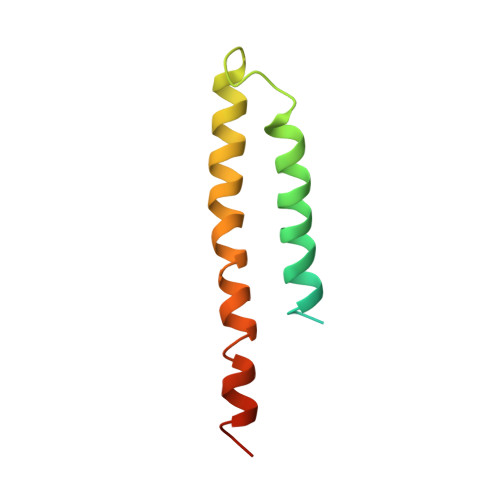Get1 stabilizes an open dimer conformation of get3 ATPase by binding two distinct interfaces
Kubota, K., Yamagata, A., Sato, Y., Goto-Ito, S., Fukai, S.(2012) J Mol Biology 422: 366-375
- PubMed: 22684149
- DOI: https://doi.org/10.1016/j.jmb.2012.05.045
- Primary Citation of Related Structures:
3B2E, 3VLC - PubMed Abstract:
Tail-anchored (TA) proteins are integral membrane proteins that possess a single transmembrane domain near their carboxy terminus. TA proteins play critical roles in many important cellular processes such as membrane trafficking, protein translocation, and apoptosis. The GET complex mediates posttranslational insertion of newly synthesized TA proteins to the endoplasmic reticulum membrane. The GET complex is composed of the homodimeric Get3 ATPase and its heterooligomeric receptor, Get1/2. During insertion, the Get3 dimer shuttles between open and closed conformational states, coupled with ATP hydrolysis and the binding/release of TA proteins. We report crystal structures of ADP-bound Get3 in complex with the cytoplasmic domain of Get1 (Get1CD) in open and semi-open conformations at 3.0- and 4.5-Å resolutions, respectively. Our structures and biochemical data suggest that Get1 uses two interfaces to stabilize the open dimer conformation of Get3. We propose that one interface is sufficient for binding of Get1 by Get3, while the second interface stabilizes the open dimer conformation of Get3.
- Structural Biology Laboratory, Life Science Division, Synchrotron Radiation Research Organization and Institute of Molecular and Cellular Biosciences, the University of Tokyo, Tokyo 113‐0032, Japan.
Organizational Affiliation:


















